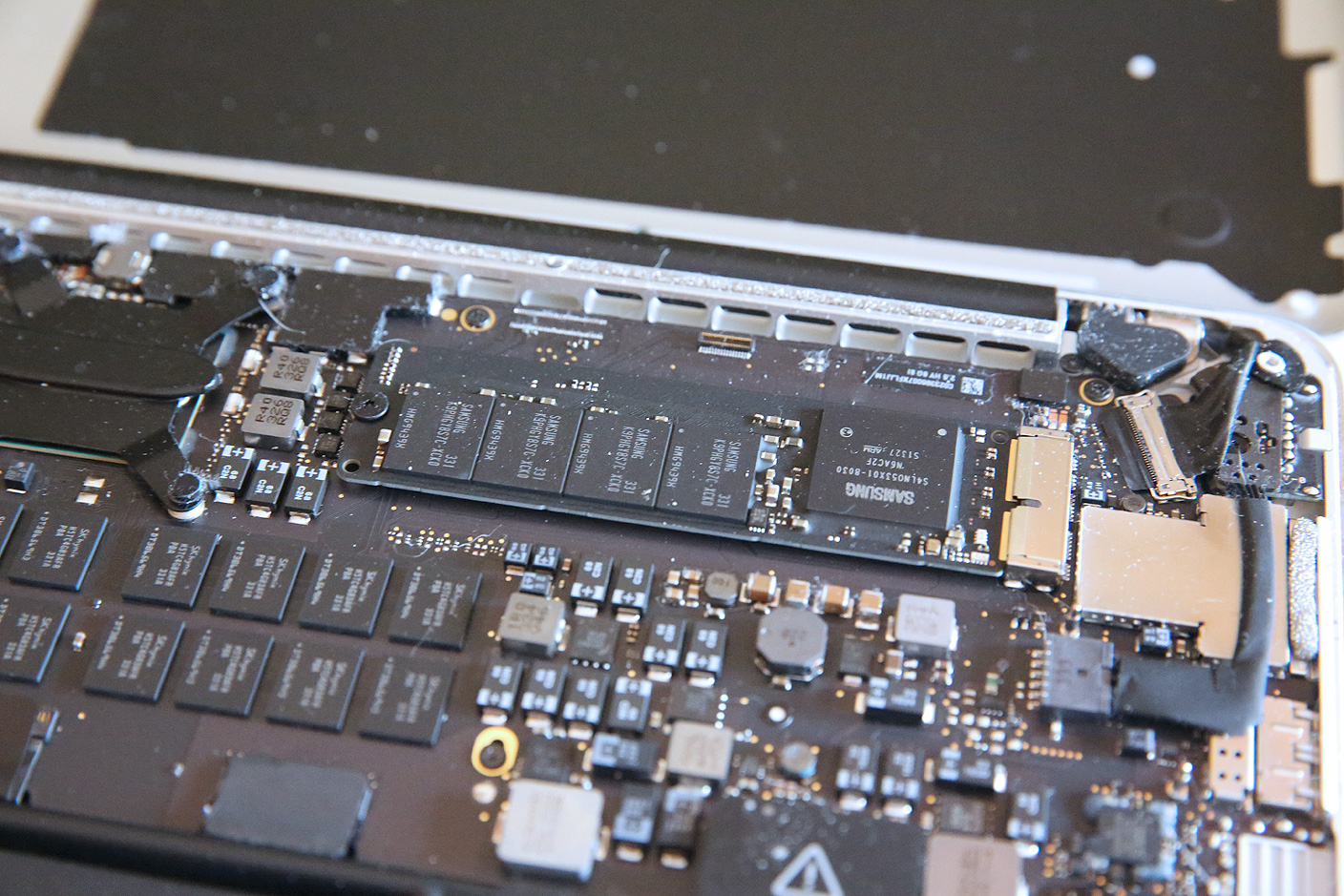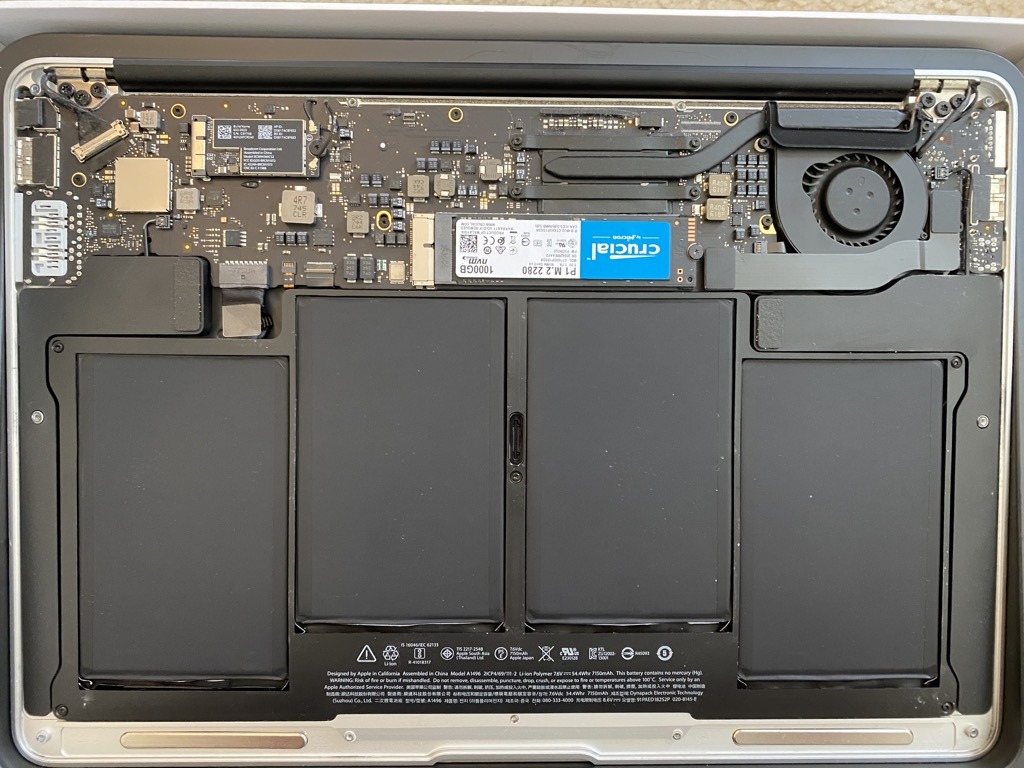

Along with supporting NVMe, Apple’s SSD also supports a fairly wide PCIe x4 connection. Shifting gears, let’s talk about the SSD controller. But it’s none the less an important step for Apple as it indicates they’re ready to start shipping NVMe devices, and consequently reaping the performance and battery life benefits. Ultimately compared to going with PCIe SSDs a couple of years ago, the move to NVMe isn’t quite the same great step. For the MacBook in particular it’s a soldered SSD so Apple doesn’t need to worry about replacement parts or end-user modifications, so this if anything is the safest way to roll out NVMe.
#Early 2015 macbook pro ssd type software
With such extensive control over their hardware and software alike, Apple has gone ahead and started shipping NVMe drives, beginning with the MacBook. Which is what makes Apple’s situation so interesting. Meanwhile in the consumer space, due to boot issues with NVMe – you need a motherboard as well as OS that can handle booting from NVMe – SSDs are still almost entirely AHCI. It’s just in the last year that we’ve seen NVMe deployed into PCIe SSDs, and those of course have been initially released on to enterprise SSDs. There can also be corner cases when the better queue support helps with performance. Thanks to lower latency the disk usage time will decrease, which results in more time spend at idle and thus increased battery life. For client workloads NVMe still brings with it a reduction in latency, and as our own Kristian Vatto has been keen to point out, even moderate improvements in performance result in increased battery life and that's what NVMe will offer. Ultimately NVMe was designed first and foremost for the enterprise market, but client workloads benefit as well, though not by quite as much.
#Early 2015 macbook pro ssd type full
Multiple queues ensure that the CPU can be used to its full potential and that the IOPS is not bottlenecked by single core limitation.

Another important improvement is support for multiple queues and higher queue depths. AHCI requires four uncachable register reads per command, which results in ~2.5µs of additional latency. This is mostly due to a streamlined storage stack and the fact that NVMe requires no register reads to issue a command. The biggest advantage of NVMe is its lower latency. we'll likely see RRAM and MRAM enter the storage market before 2020). NVMe in turn is built specifically for SSDs and PCIe, and as software interfaces usually live for at least a decade before being replaced, NVMe was designed to be capable of meeting the industry needs as we move to future memory technologies (i.e. As a result AHCI can't take full advantage of SSDs, particularly PCIe SSDs with their high bandwidth links, leading the storage industry to develop a software interface that abolishes the limits of AHCI. While that doesn't prevent its use on SSDs, AHCI is more optimized for high latency rotating media than low latency non-volatile storage. NVMe replaces AHCI (Advanced Host Controller Interface), which dates back to 2004 and was designed with hard drives in mind. Short for Non-Volatile Memory Express, NVMe is a new software interface/protocol designed specifically for PCIe SSDs, and designed to complete what has been a two-part transition from SATA SSDs to PCIe SSDs. Clearly the MacBook’s SSD was going to be a much bigger deal than I first thought. Second of all the device listed under NVMExpress has a model number prefix we’ve never seen before not Samsung or Toshiba, but rather an Apple-ish “AP”. First and foremost, a new section was available under the Hardware tree called NVMExpress. So imagine my surprise when I opened up the System Profiler to see under the hood, and found not one but two unexpected things. Consequently what I was expecting was a Samsung or Toshiba PCIe SSD soldered on to the logic board, similar to the SSD selection of Apple’s other devices. Which makes a lot of sense, as Apple choosing to save every last millimeter means a M.2 SSD would be out of the question, and meanwhile Apple has plenty of SSD suppliers to choose from, even for soldered designs. While we haven’t seen both sides of the MacBook’s logic board, and as a result can’t say with certainty how it’s laid out, from the side we have seen it's clear that we’re also looking at a soldered SSD.

To be honest, prior to receiving the MacBook I wasn’t expecting anything particularly interesting for the laptop’s SSD. The MacBook’s SSD: NVMe & an Apple Developed SSD Controller?


 0 kommentar(er)
0 kommentar(er)
